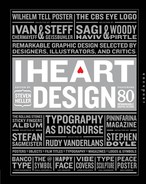SELECTED BY
MARTHA SCOTFORD
HET BOEK VAN PTT
DESIGNED BY
PIET ZWART
Written and designed for children by Piet Zwart, this book describes and illustrates the extensive services of the Dutch postal, telegram, and telegraph service, and how to use them properly. The pages are dense with information in words and pictures. The texts pulse as the sans serif font expands and contracts, changes size and weight; handwriting adds more contrast. The images are a compendium of what European avant-garde design had discovered and explored in typography and photography by the 1930s. And, we must be reminded, the compositions were compiled using film and hand-made mechanicals, printed by rotogravure that provides the deep colors that soak into the paper.
Zwart (with illustrations by Dick Elffers) created the images using pen and ink drawing, color illustration, collage, and photomontage. There are straight documentary photographs of citizens at the post office, as well as postal workers and postal facility details; photos of real children combined with studio shots of paper dolls showing how to make a phone call or how letters are delivered; photos to show official documents, proper envelope addressing, and different kinds of packages. Illustrative elements include old printers’ pointing hands, and the typographic variety of stamps and official labels.
Zwart employed all forms of information design: maps, diagrams, 3-D models, and proto-international style pictograms. He used common objects (spool of thread, matchbox) to show size and proportion, and hands for counting. There is humor (a monster in a package); there are surreal landscapes of strange proportions and viewpoint. A hand-drawn X covers the dog you should not mail; a fragile package of paint ends up spilled with tiny handprints all over the page. Four-color artwork merges into black-and-white photos and duotones; process colors combine and separate; all possible permutations are employed.
Piet Zwart was a prominent designer and teacher in the Netherlands between the world wars—part of an international group that included Lissitzky, Rodchenko, van Doesburg, Schwitters, and Bauhaus faculty, in contact through exhibitions, publications, friendship, and professional visits. He and others worked in the method of “typo-photo,” composing corporate, government, and institutional messages by manipulating their own photographs and typography to produce colorful layered compositions that directed your eye to objects, essential facts, and telling details.
For children, Zwart did not hold back. Using all his experience, he brought brilliant color effects, blended images of fact and fancy, an invitation to engage in civic life, and communication to these pages. There is an entry point on every page; the reader/viewer can explore and discover. Like many of the children for whom this was created, many of us enjoy and understand this book without reading a word!
